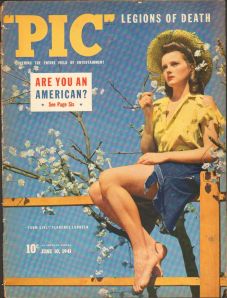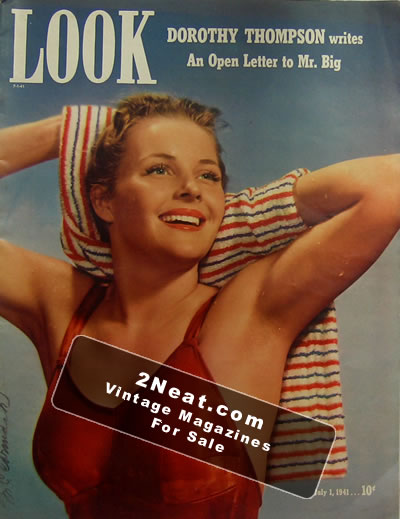The stunning blonde amazon was a short lived Hollywood extra, following suit of many other Goldwyn girls.
EARLY LIFE:
May Florence Lundin was born on February 9, 1922, in Los Angeles, California, to Carl Ludin and his wife, Selma Lenden. Both of her parents were born in Sweden. Her older sister, Gerda, was born in California in 1918.
Florence grew up in Los Angeles. Her parents separated sometime during the the 1930s. In 1940, Florence lived with her mother, sister and brother-in-law (Keith Garrick) and nephew in Los Angeles and worked as a model.
She trained as a stenographer at J C Fremont high school and was dancing as a junior hostess at Hollywood Canteen when discovered by MGM’s Ida Koverman (Koverman was Louis B. Meyer’s secretary and a very influential woman). She signed a contract with M G M and the following day was loaned out for Up in Arms.
CAREER:
Florence had a very, very minor career. She appeared in only four movies, all uncredited.
She made her movie debut long before she was noticed by Ida Koverman, in 1941, by appearing in Hitchhike to Hell, an exploitation movie. Needless to say, it’s a low quality work of dubious reputee, and it is even possible that Florence appeared in more of these movies to cash in some loot.
Her first proper movie was Broadway Rhythm, where she played a autograph seeker. A imdb reviewer wrote nicely of the movie:
A pleasing enough entertainment, working primarily as a pageant of various MGM specialty acts – impressionists, contortionists, nightclub acts, tap-dancers, as well as the standard musical theatrical numbers. The film isn’t a musical in the traditional sense, as all the musical numbers are in the contest of an actual performance (some done toward the camera). It’s much more in the tradition of a 1960s-70s variety TV show.
 In other words, it’s a typical bread and butter musical with the “it was always there but you never saw it” theme. For a newcomer like Florence this was not the worst way to start a career.
In other words, it’s a typical bread and butter musical with the “it was always there but you never saw it” theme. For a newcomer like Florence this was not the worst way to start a career.
Being a tall and shapely Teutonic maiden, Florence was cast a one of the Goldwyn girls in Up in Arms. Again, I am not writing any more about this movie. Obviously a huge number of nice looking girls appeared in it, and Florence was just one of the masses.
Florence’s last appearance was in Meet the People.A modest film with no big production values, it’s far from a very good movie but it fits the bill of a mid tier musical. Lucille Ball and Dick Powell aretypically good in the leads, plus is features some other MGM musical stock actors and actresses like Virginia O’Brien, Bert Lahr and June Allyson.
After this, Florence got divorced and probably left Hollywood.
PRIVATE LIFE:
Florence hit the papers before she even made a proper movie debut. Due to her “Scandinavian blond” good looks, she was a sought after girl about town as early as 1940. She dated noted songwriter Garwood Van, but hit the jackpot when she was noticed by Franchot Tone. She happily let the two men vie for her affections. Franchot won out, but he was a all around charmer, dating Peggy Moran at the same time. Franchot, ever the perfect gentleman, used to wine and dine Florence at the Beachcomber’s, a famous sea food restaurant in Los Angeles. Predictably, it did not last long.
Florence married actor Robert Conway in 1941. He was born on June 12, 1908 in Chicago, Illinois as Robert Anderson.
Florence gave birth to twin daughters, Jeannette Kathryn Andersen and Judith Anne Andersen on April 27, 1942. Sadly, her marriage to Andersen was a very troubled one, and they separated in September 1943. She went back home to her mother Selma, and never returned. They divorced in 1944.
I have no idea what happened to Florence afterwards. IMDB lists her death on January 23, 1961, but I could not find any Florence, born on February 9, 1922, who died on that day. There is a whole list of women named Florence born on February 9, 1922 who died at a later date, ranging from 1980s until 2000s, and our Florence could be any of these women.
What I do know is that Florence’s sister, Gerda Garrick, died on 2000. Her former husband, Robert Conway, died in 1969.






